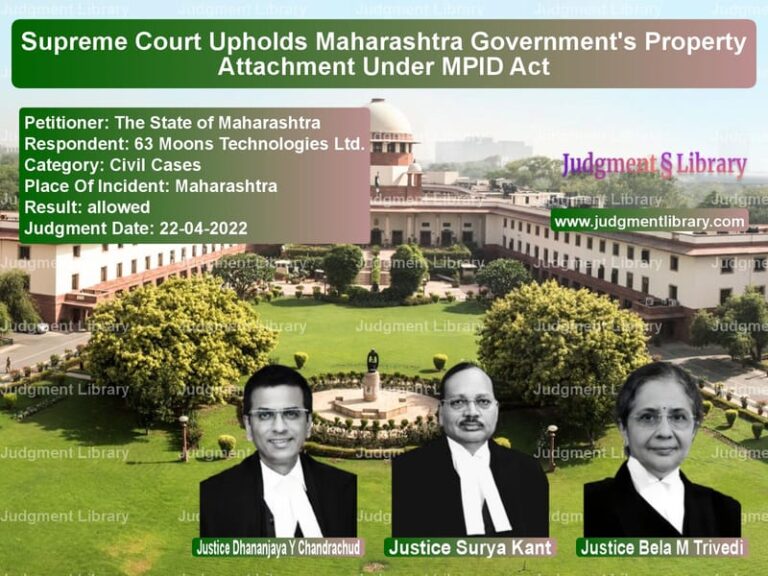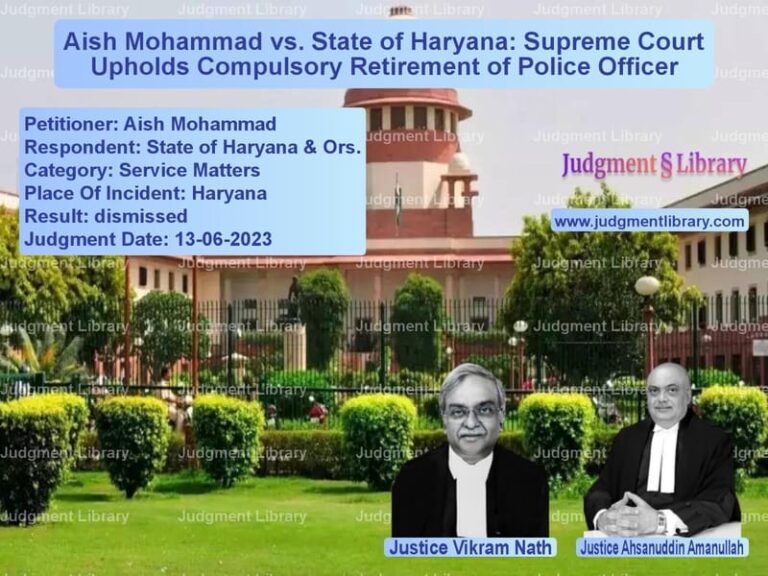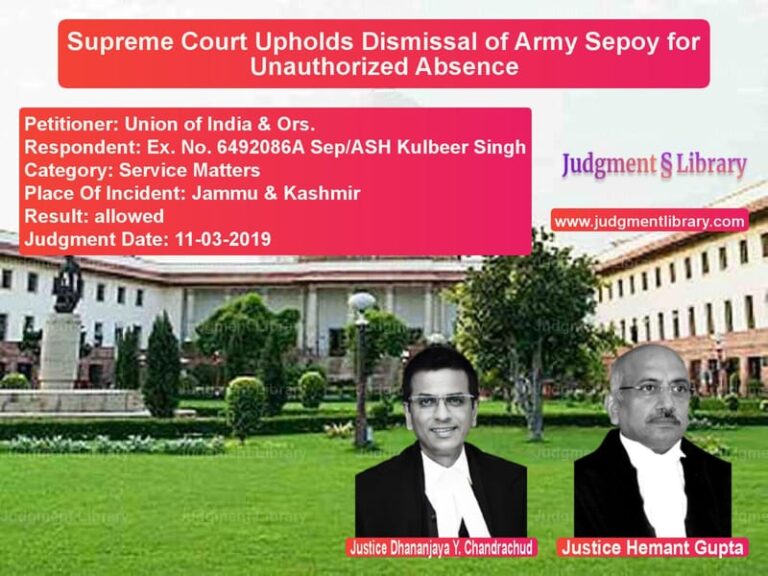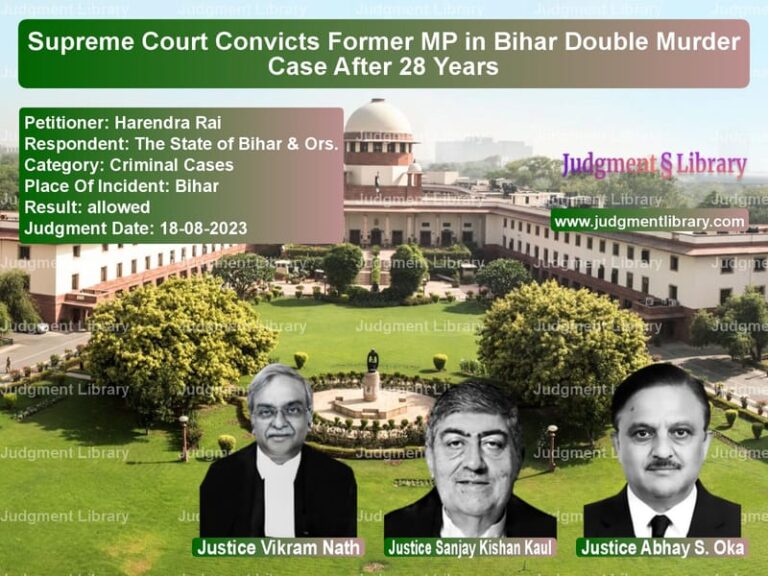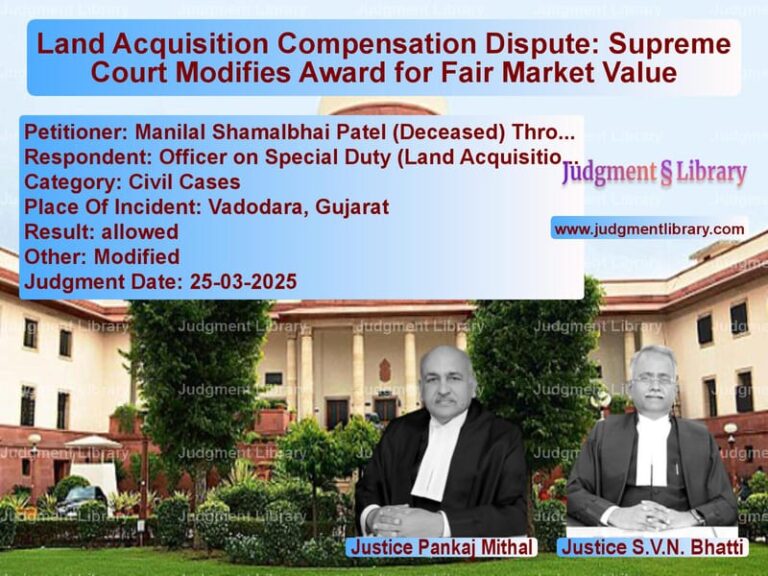Preserving the Mahakaleshwar Temple: Supreme Court’s Directives on Shivlinga Protection
The case of Sarika vs. Administrator, Mahakaleshwar Mandir Committee, Ujjain (M.P.) & Ors. is a significant ruling concerning the conservation and protection of the Mahakaleshwar Temple, one of India’s most revered Jyotirlingas. The Supreme Court was tasked with monitoring compliance with its previous order regarding the preservation of the temple and the Shivlinga from deterioration.
The Court’s intervention was necessitated due to concerns over the erosion of the Shivlinga caused by various factors, including rituals, environmental conditions, and improper maintenance. An Expert Committee comprising members from the Archaeological Survey of India (ASI) and the Geological Survey of India (GSI) was appointed to examine the extent of the damage and recommend preventive measures.
Background of the Case
The Mahakaleshwar Temple in Ujjain is one of the twelve Jyotirlingas and holds immense religious and cultural significance. Over time, concerns arose regarding the gradual erosion of the Shivlinga, which many devotees believed was due to the application of offerings such as milk, curd, ghee, honey, and the weight of ornaments like Mund Mala and Serpakarnahas. These factors led to continuous deterioration of the structure.
In a previous judgment dated May 2, 2018, the Supreme Court had directed remedial measures to prevent further damage to the Shivlinga. The Court later sought compliance reports and expert assessments to evaluate whether the measures were being properly implemented.
Findings of the Expert Committee
The Expert Committee, which visited the temple on January 19, 2019, reported the following key observations:
- The Shivlinga had suffered further erosion since the last inspection in 2018.
- The pH value of the materials used in the Bhasma Aarti stood at 10.51, which was highly reactive to the Shivlinga’s siliceous cementing material, causing deterioration.
- Mechanical erosion was occurring due to the weight of Mund Mala and Serpakarnahas, even though their weight had already been reduced.
- Sanitation and drainage issues needed improvement.
- Modern construction within the temple premises was interfering with the temple’s heritage.
- The walls had been painted with modern colors, which disrupted the temple’s original aesthetic.
- Devotees were frequently rubbing the Shivlinga, which contributed to its erosion.
Petitioner’s Arguments
The petitioner, Sarika, argued that:
- The Shivlinga was facing severe erosion, and immediate conservation efforts were necessary.
- The traditional offerings and rituals should be modified to ensure the longevity of the Shivlinga.
- The temple premises had been altered with modern constructions, which needed to be removed to restore the temple’s historical integrity.
- The recommendations of the Expert Committee should be implemented in full to prevent further deterioration.
Respondent’s Arguments
The Temple Committee contended that:
- Steps had already been taken to mitigate the damage to the Shivlinga, including reducing the weight of the Mund Mala.
- The temple was regulating entry into the Garbh Griha, and during the COVID-19 pandemic, no visitors were allowed inside.
- Restoration work was in progress and would be completed within three months.
- Eyesore paintings and modern constructions within the temple premises were being removed.
- Periodic expert inspections were necessary to monitor the effectiveness of conservation measures.
Supreme Court’s Key Observations
The Supreme Court, after reviewing the reports and submissions, stated:
“The matter is of grave concern as due to reckless offerings, the Lingam of Omkareshwar Temple was destroyed. The same should not be allowed to happen in Mahakaleshwar Temple.”
The Court emphasized the importance of periodic inspections and preventive measures to ensure the longevity of the Shivlinga. It issued a series of directives to the Temple Committee, State Government, and Central Government.
Final Judgment and Directives
The Supreme Court issued the following key directives:
Preservation of the Shivlinga
- No devotee shall be allowed to rub the Shivlinga.
- The pH value of the Bhasma Aarti materials must be improved to prevent further damage.
- The weight of the Mund Mala and Serpakarnahas should be further reduced.
- Only a limited quantity of pure milk shall be allowed for offerings, while substances like ghee, honey, and curd should not be applied directly.
- Poojaries and Purohits must ensure that no visitor rubs the Shivlinga during rituals.
Structural Conservation
- Modern additions within the temple premises should be removed.
- The original architectural work should be restored.
- The Central Building Research Institute (CBRI), Roorkee, was directed to conduct a structural assessment and submit a report within six months.
- The Central Government was instructed to bear the project expenses amounting to Rs. 41.30 lakhs.
Temple Administration and Rituals
- Customary Poojaries and Purohits should be involved in temple management to ensure the proper performance of rituals.
- Encroachments within 500 meters of the temple premises must be removed.
- A video recording of temple rituals should be maintained for at least six months for monitoring purposes.
- The Ujjain Smart City Limited (USCL) was directed to undertake the Mahakaal Rudrasagar Integrated Development Approach project.
Implications of the Judgment
This ruling has significant implications for heritage conservation in India:
- It underscores the importance of expert oversight in temple maintenance and conservation.
- It sets a precedent for balancing religious practices with the need for structural preservation.
- It holds temple management accountable for maintaining historical integrity.
- It ensures government intervention in financing conservation efforts for heritage sites.
With this judgment, the Supreme Court reaffirmed its commitment to protecting India’s ancient temples and ensuring that religious practices do not contribute to their degradation.
Petitioner Name: Sarika.Respondent Name: Administrator, Mahakaleshwar Mandir Committee, Ujjain (M.P.) & Ors..Judgment By: Justice Arun Mishra, Justice B.R. Gavai, Justice Krishna Murari.Place Of Incident: Ujjain, Madhya Pradesh.Judgment Date: 01-09-2020.
Don’t miss out on the full details! Download the complete judgment in PDF format below and gain valuable insights instantly!
Download Judgment: Sarika vs Administrator, Mahak Supreme Court of India Judgment Dated 01-09-2020.pdf
Direct Downlaod Judgment: Direct downlaod this Judgment
See all petitions in Property Disputes
See all petitions in Public Interest Litigation
See all petitions in Environmental Cases
See all petitions in Judgment by Arun Mishra
See all petitions in Judgment by B R Gavai
See all petitions in Judgment by Krishna Murari
See all petitions in partially allowed
See all petitions in Modified
See all petitions in supreme court of India judgments September 2020
See all petitions in 2020 judgments
See all posts in Civil Cases Category
See all allowed petitions in Civil Cases Category
See all Dismissed petitions in Civil Cases Category
See all partially allowed petitions in Civil Cases Category


